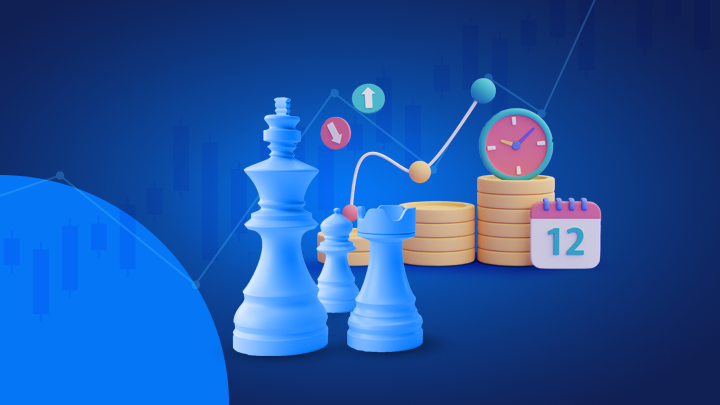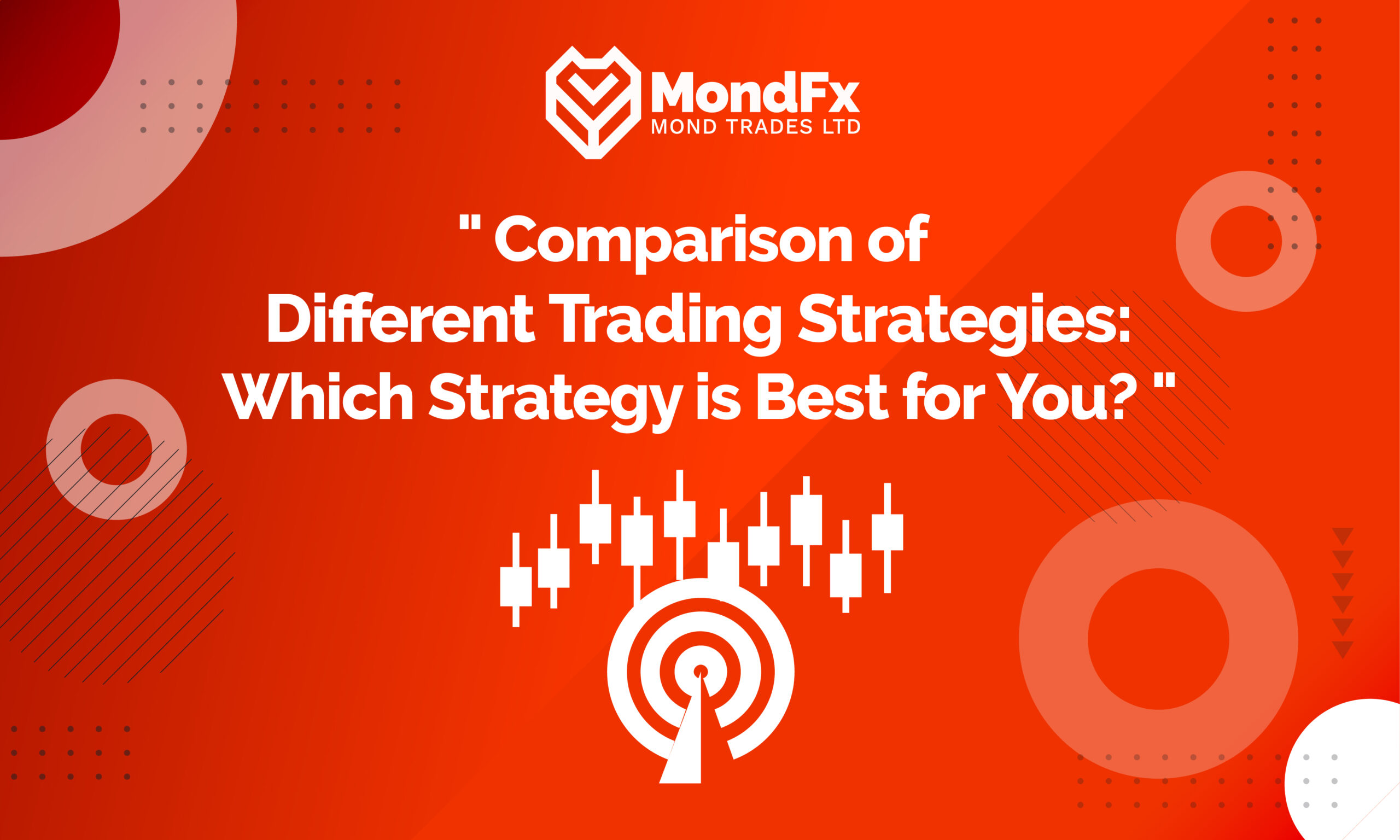It may not be far from reality to say that in the forex market, there are as many trading strategies as there are traders, and each trader has their own unique trading style. However, there are specific strategies that have gained popularity over the decades. These methods continue to be used by traders around the world. In this article, we will become more familiar with these strategies and evaluate the effectiveness of each.
What is a Trading Strategy?
Trading strategies are systematic approaches used by traders to make informed decisions in financial markets. These strategies consist of various steps that help traders identify opportunities amid market fluctuations and enter trades at the best possible points.
In simpler terms, a trading strategy serves as your roadmap for analyzing the market and planning your actions in the forex market.
A standard trading strategy should include entry and exit points, position sizes, trading timeframes, and risk management rules. By utilizing trading strategies, traders can decide when to buy and sell, determine the trade volume, and safeguard their capital from significant losses.
Types of Trading Strategies
Swing Trading
Swing trading refers to longer-term trades that take advantage of market movements in both directions. Swing traders buy when they expect prices to rise and sell when they anticipate a decline.
An important aspect of swing trading is that trades can remain open for several days. This is because swing traders analyze higher time frames, making their analyses less applicable for short-term trades.
Swing trades often involve larger stop-loss orders due to the focus on longer-term trends. Therefore, this strategy is not recommended for traders with a small initial capital.
Advantages of Swing Trading
– Suitable for Traders with Limited Time: Swing trading allows individuals who may not be able to dedicate the entire day to trading to still engage effectively in the market.
– Abundant Trading Opportunities: Swing traders can take advantage of various market movements and trends over a longer period.
Disadvantages of Swing Trading
– Costs of Keeping Positions Overnight: Holding trades overnight can incur additional costs, such as overnight financing fees, which can affect overall profitability.
Day Trading
In this strategy, traders open and close their positions within a single trading day. This does not mean that a trader only executes one trade per day; in fact, most day traders frequently buy and sell multiple times throughout each trading day.
A key feature of day trading is that day traders close all open positions before the end of the trading day. This approach helps avoid the risk of adverse overnight market movements.
Advantages of Day Trading
– Quick Profit Opportunities: Day trading offers chances to capitalize on short-term price movements within a single day, allowing for rapid income generation.
– Reduced Exposure to Overnight Risks: By closing all positions before the end of the trading day, day traders eliminate the risk of facing overnight market volatility or unexpected news that could impact their trades.
– Liquidity and Accessibility: Day trading does not lock up capital for extended periods, enabling traders to access their funds at the end of each trading day. This is particularly appealing for those who require higher liquidity.
Disadvantages of Day Trading
– Psychological and Emotional Stress: The fast-paced nature of day trading can be mentally and emotionally challenging, and novice traders may act impulsively.
– Impact of Random Price Movements: Short-term price fluctuations can be influenced by random volatility, making it difficult to distinguish between meaningful trends and temporary market movements.
– Higher Transaction Costs: Frequent buying and selling can lead to increased transaction costs, including commissions and spreads, which can erode overall profitability.

Price Action Trading
This strategy focuses on price movements, which include changes and fluctuations in price over various time frames. Traders use price action to identify prevailing trends or price patterns and then trade based on these movements.
The first step in this strategy is to decide on the time frame you want to trade within and then identify the specific price action strategy you plan to use. Traders look for dominant price movements in their chosen time frame, identify the prevailing trend or pattern, and then execute trades in that direction.
Advantages of Price Action Trading
– Simplicity: Price action trading relies solely on price movements on the chart, eliminating the need for complex indicators or tools.
– Versatility: The principles of price action can be applied across various markets and time frames, making it a diverse strategy suitable for traders interested in stocks, forex, commodities, and more.
Disadvantages of Price Action Trading
– Subjectivity: Analyzing price movement patterns can be subjective, leading different traders to interpret the same chart in various ways.
– Experience Required: Effectively understanding price patterns and trends typically requires experience and a deep understanding of market dynamics.
– Unreliable Signals: Price patterns are not foolproof indicators and can sometimes generate false signals, resulting in poor trading decisions.
Algorithmic Trading
Algorithmic trading is a strategy in which a set of instructions is input into a computer model. This automated trading process uses data such as price, time, and trading volume, as well as complex mathematical formulas and models.
Algorithmic trading relies on rules-based strategies and algorithms. These rules dictate the timing and price for entering trades, when and where to take profits, and how to set stop-loss orders. Human interaction in this strategy is typically limited or entirely absent, occurring only after the trader has defined the initial rules. However, these rules are often adjustable by the trader.
– Algorithms execute trades at incredible speeds, responding to market changes in milliseconds. This speed can capitalize on short-term opportunities and execute large orders more effectively than manual trading.
– Algorithmic trading eliminates emotional biases that may affect human decision-making. This approach follows predefined rules and strategies, preventing trading based on emotions or impulses.
– Algorithms can be tested using historical data to evaluate their performance under various market conditions. This helps traders optimize strategies before deploying them in real markets.
Disadvantages of Algorithmic Trading
– Developing, implementing, and maintaining algorithmic trading systems requires advanced technical skills and knowledge.
– Algorithms may be prone to technical glitches, bugs, and connectivity issues, which can lead to unexpected trades if not properly monitored and managed.
– Algorithms may struggle to adapt to unexpected news or severe market changes, potentially resulting in unforeseen losses.

News Trading
News trading relies on fundamental events that can impact any financial market. This may include corporate events such as earnings reports or macroeconomic events that could influence the market.
News traders first identify significant economic or corporate events, such as economic data releases or earnings reports. They then analyze the potential impact of these events on the market and ultimately enter trades based on market volatility triggered by news announcements.
Advantages of News Trading
– Major news events can trigger significant price movements, creating opportunities for profit in a short time frame.
– News traders focus on specific events and their potential impacts, allowing them to concentrate on a defined set of factors rather than the overall market.
Disadvantages of News Trading
– News trading carries considerable risk due to the unpredictable nature of market reactions to news events.
– Markets may react erratically to news, leading to false signals for traders.
– Executing trades at the precise moment of news release can be challenging. Due to rapid price changes, execution delays can result in missed opportunities or undesirable trades.
As mentioned, timely execution of orders is crucial in news trading. Many brokers may prevent new trades or limit leverage at the time of news announcements.
Advantages of Mond FX
One of the key advantages of Mond FX over other brokers is its fixed leverage, even during news announcements. At Mond FX, you can enter trades as quickly as possible while maintaining your usual leverage. Notably, the spreads during news events do not experience significant changes, unlike those at other brokers.
Trend Trading
Trend trading is a strategy aimed at capitalizing on market opportunities by identifying and following market direction. Traders using this strategy seek to enter positions in the direction of the trend and hold them until the trend shows signs of reversal.
This approach relies heavily on the principle that markets tend to move in identifiable trends. Trend traders use various tools and indicators to confirm the direction and strength of the trend. They focus on higher highs and higher lows in an uptrend, and lower highs and lower lows in a downtrend, with entry points typically based on retracements or breakouts.
Advantages of Trend Trading
– Entry and exit points are based on continuation or reversal signals, simplifying decision-making.
– Trend trading usually operates on a rule-based system, making it easier to manage emotions and adhere to a trading plan.
– By focusing on the overall market direction, trend trading can simplify market analysis by filtering out short-term fluctuations.
Disadvantages of Trend Trading
– In volatile markets, trends can reverse quickly.
– Trend trading may be less effective in ranging or stable markets where trends are not clearly defined.
Scalping Trading
Traders who utilize the scalping strategy engage in very short-term trades with small price movements. The goal of scalpers is to make a small profit from each trade. As a scalper, you must have a disciplined exit strategy, as a large loss can wipe out many smaller profits that have been gradually accumulated. Scalping is particularly common in Forex trading, especially for currency pairs.
Advantages of Scalping
– Scalping is suitable for those who want to trade flexibly.
– It offers numerous trading opportunities throughout the day.
Disadvantages of Scalping
– Limited applicability in the market. Scalping requires very high volatility and large trading volumes to be effective.
– It demands discipline. Since scalping requires larger position sizes compared to other trading styles, traders must be highly organized.
– It can be very stressful due to the fast-paced nature of trading.

Which Trading Strategy is Best?
When it comes to trading strategies, the most important point to understand is that there is no absolute “best” strategy. The right strategy for you depends on your personal characteristics, trading goals, capital, risk tolerance, and available time.
For instance, if you lack strong computer skills, algorithmic trading may not be suitable for you. If you have an analytical mindset, news trading might be a good fit. If decision-making based on charts feels natural to you, swing trading or day trading could work well.
Regarding goals, if you aim to trade full-time and make it your primary source of income, short-term trading strategies like day trading should be your focus. Conversely, if you’re looking for supplemental income, position or swing trading might be better options.
If you can’t closely monitor the markets throughout the day, you won’t be able to be a day trader. However, if you can dedicate a limited amount of time each day for market analysis and order placement, position or swing trading may be suitable for you.
Final Thoughts
In this article, we aimed to detail various trading strategies, outlining their advantages and disadvantages. Be sure to test any chosen trading strategy in a demo account and conduct necessary backtesting before applying it to your live trading account.
Lastly, before entering the Forex market, it’s advisable to enhance your skills as a professional trader by watching the comprehensive course “From Zero to Hero in Forex” by Mohammad Ahangari Asl. This course covers all topics from basic to advanced, preparing you for the challenges of the financial market. By learning professional trading strategies and risk management techniques, you can increase your chances of success in the competitive world of trading. For more information and to register for this course, take action now and make a significant step toward becoming a professional trader in Forex.
Frequently Asked Questions
- What is a trading strategy and why is it important?
A trading strategy is a set of rules and methods used to make decisions about buying and selling assets in financial markets. Having a trading strategy is important because it helps you make rational and informed decisions, preventing emotional and random actions in trading.
- How do I choose the best trading strategy for myself?
Choosing the best trading strategy depends on various factors, including your personality, capital, risk tolerance, and the time available for trading. It is recommended to try several different strategies to see which one aligns best with your style and needs.
- Are trading strategies always successful?
No trading strategy can guarantee consistent success. Success in trading depends on various factors, including market conditions, proper execution of the strategy, and risk management. Trading strategies should be regularly reviewed and adjusted to adapt to market changes.



